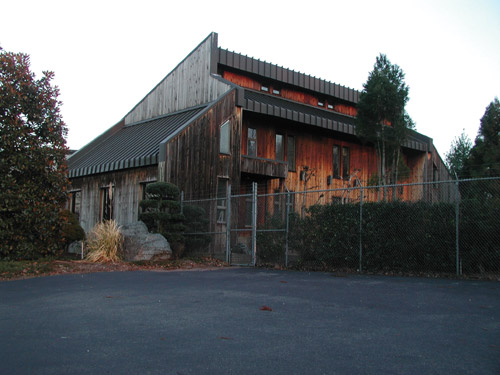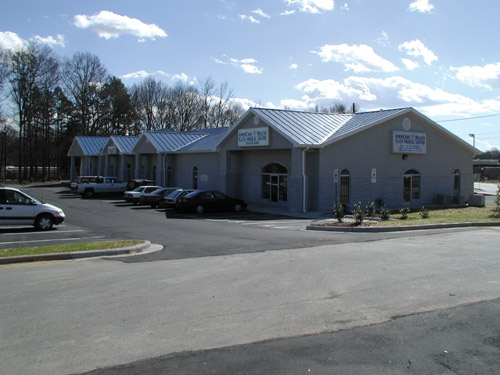Professional Roofing welcomes letters to the editor. Views expressed in "Letters" are not necessarily those of NRCA. Letters must be signed and include a return address and telephone number. Professional Roofing reserves the right to edit letters for clarity and length. Send letters to Ambika Puniani, Editor, Professional Roofing, 10255 W. Higgins Road, Suite 600, Rosemont, IL 60018-5607; fax (847) 299-1183; or e-mail apuniani@nrca.net.
Reader disagrees with Dick Baxter
I would like to comment about standing-seam metal roof system remarks that concern me from the January issue.
First, I agree with the reader's explanation in "Letters," page 10, that moveable clips should be centered during initial roof system installation. And the Metal Building Manufacturers Association (MBMA) also agrees. In chapter six of MBMA's Metal Roofing Design Manual, there are two references that indicate most manufacturers use centering devices to install clips. It is a rare occurrence that a roof system is installed during the coldest or warmest time of year—centering works.
Second, I must comment about "Taking a closer look," page 32, by Dick Baxter, president of CRS Inc., Monroe, N.C. It is obvious that Baxter does not like metal roofing. This is not surprising because his business has been competing with metal roofing for years. More than once, I have heard Baxter promote the benefits of a "four-ply built-up roof system."
Perhaps Baxter only sees "problem" metal roof systems as a result of his consulting business, but there are more roof systems that perform well than do not. In fact, Baxter's comments about 1/4-in-12 (1.2-degree) sloped roofs apply to all segments of the roofing industry—not just metal roof systems.
The most troubling of Baxter's comments are those criticizing "erectors," specifically the following: "Basic roof panel alignment during the installation phase seems to elude most metal roof system 'erectors,'" and "Unfortunately, misunderstanding (or lack of understanding) by the 'erector' about how the system was designed to function results in … ." These statements simply are not true about a majority of metal roof system installers. The popularity of metal roofing continues to increase because of the many quality installations nationwide.
However, I agree that improvements can be made. Contractors should provide metal roof system installation training to crews. Nearly all major metal roof system manufacturers offer training programs for the installation of their roof systems because each one is unique and installs differently. Specifiers also should require that foremen attend training programs before installing a specific metal roof system even if they have years of similar installation experience.
Missouri has invested more than $50 million in new installations and reroofing projects during the past five years and has had equal success with metal, modified bitumen, single-ply and other roof systems.
John L. Hequembourg, CSI, CDT
Missouri Division of Design and Construction
Jefferson City, Mo.
Following is Baxter's response to the letter:
"Photos 1 and 2 depict the commitment CRS Inc. and I have to built-up roof (BUR) membrane systems. You did not read me wrong; I still believe a properly installed gravel-surfaced BUR membrane system is the 'best bang for the buck' when installing low-slope roof membrane systems. But that does not mean CRS installs nothing else. The bronze roof system on CRS' office was installed by CRS in 1985 and won a design award (see Photo 1). The blue roof system in Photo 2 was installed by CRS in 2001, and its panels were rolled in our shop. And we have installed many metal roof systems in between.

Photos courtesy of CRS Inc., Monroe, N.C.
Photo 1: CRS installed a bronze roof system on its office in 1985.

Photo 2: In 2001, CRS rolled the panels for and installed this blue metal roof system.
"If you think I am biased toward BUR membrane systems, perhaps you now can rethink that position. And you are correct—most of my comments were driven by autopsies of metal roof systems suffering from a basic lack of erector installation skills. That does not mean I don't see most metal roof systems performing as intended and providing long, relatively trouble-free service lives."
Reader comments about fire-resistance
I would like to comment about two articles in the January issue. I will begin with NRCA Associate Executive Director of Technical Services Mark Graham's article, "Are fire ratings permanent?" page 53.
Graham references the Midwest Roofing Contractors Association (MRCA) study about fire-resistance properties of aged roof assemblies. But Graham ignored the study's summary that cautions against drawing conclusions because of the study's limited nature. The summary reads: "These tests are not conclusive as only one sample of each aged system was tested in spread of flame and burning brand. While the procedures of ASTM E 108-00 were followed, the testing of only one sample does not allow for any certifiable results." Instead, Graham alleges that aggregate-surfaced roof membrane assemblies will maintain their fire-resistant properties better than nonballasted single-ply membranes.
Underwriters Laboratories (UL) Inc.'s listings of approved roof membrane systems specify the types of roof decks, brands of membranes and insulation, insulation thicknesses and maximum slopes at which the listings apply. It then is important to know whether the roof system specimens tested by MRCA were the same specimens with which manufacturers tested and achieved their UL listings. The insulation, slope and substrate are as important as the membrane when testing roof assemblies. We at Stevens Roofing Systems suspect that some of the specimens tested may not have been approved roof assemblies.
It also should be noted that the burning-brand test only is conducted on roof assemblies to be used on combustible roof decks. If the specimens tested were intended for use on noncombustible roof decks, the test would be irrelevant. It is the responsibility of every roof system installer and specifier to be sure that all roof system components, not just a membrane, are included in a manufacturer's UL listing. Requiring UL labels on all appropriate materials helps ensure the products received are the same as those listed in specific roof assemblies that have passed the proper tests.
The other article I would like to comment about is "Taking a closer look," page 32, in which Dick Baxter, president of CRS Inc., Monroe, N.C., references TPO membranes' fire-resistance properties. We know of no TPO membranes, at least those produced by Stevens Roofing Systems, that are not tested by UL and FM Global for fire resistance. Unannounced in-plant audits by these testing agencies is a quality assurance that the products being produced are the same as those tested for ASTM E 108 and UL-790 and meet wind-uplift requirements. Again, these tests are of a roof assembly, not just a membrane.
Baxter also writes, "There are manufacturers who can become more competitive by eliminating UV stabilizers from the TPO compound and relying on aggregate ballast to provide UV protection for the TPO membrane."
We would like to know which manufacturers he is referring to because we are not aware of any that would take this step. Baxter's assertion seems preposterous because UV-stable products are fundamental in our industry.
By publishing such incomplete or misleading information, you not only do a serious disservice to your readers but also irreparable harm to the manufacturing community.
Thomas E. Gallivan
Stevens Roofing Systems
Holyoke, Mass.
Following is Graham's response to the letter:
"My comments regarding the fire-resistance ratings of aged aggregate-surfaced roof assemblies were not based on MRCA's Technical and Research (T & R) Committee's testing. This is quite clear in the article because MRCA's T & R Committee's testing was discussed under the heading 'Fire testing,' and my comments about aggregate-surfaced roof assemblies were made under the heading 'A need for data.' MRCA's T & R Committee only tested coated and uncoated (not aggregate-surfaced) roof assemblies.
"As I explained in my article, it is reasonable to assume that aggregate-surfaced roof membrane assemblies will likely maintain fire-resistance ratings unless there is significant scouring or blow-off of the aggregate surfacing. This is because the aggregate largely provides for these roof assemblies' fire resistances. I do not expect the fire-resistance properties of aggregate significantly will change in time.
"For aged roof assemblies without aggregate surfacing, such as unsurfaced polymer-modified bitumen sheet and mechanically attached and fully adhered single-ply membrane roof assemblies, the fire-resistance properties largely are unknown. MRCA's T & R Committee's testing provides limited data regarding aged roof assemblies of these types. This data calls the issue into question.
"Regarding your assertion that some tested specimens may not have been from approved assemblies, MRCA's T & R Committee indicated during MRCA's convention that the specimens had been taken from assemblies that were represented as being listed.
"As I indicated in my article, the U.S. roofing industry needs additional information about the fire-resistance properties of aged roof assemblies.
"Given the potential building-code compliance concerns and possible liabilities associated with this issue, I am confident a large number of Professional Roofing's readers do not consider discussion of this issue to be a serious disservice. Roofing professionals consistently tell me they would rather know where potential pitfalls lie than ignore that they exist."
Following is Baxter's response to the letter:
"My observations and comments are based on independent test results of various materials obtained from contractors or existing roof systems that raise questions about the properties of various materials, including TPO membranes. Autopsies of failed TPO membranes contribute to why and how testing is conducted. Because most TPO membranes are chemically different and more or less fire-resistant each time they are tested, I cannot help but raise the questions."
COMMENTS
Be the first to comment. Please log in to leave a comment.